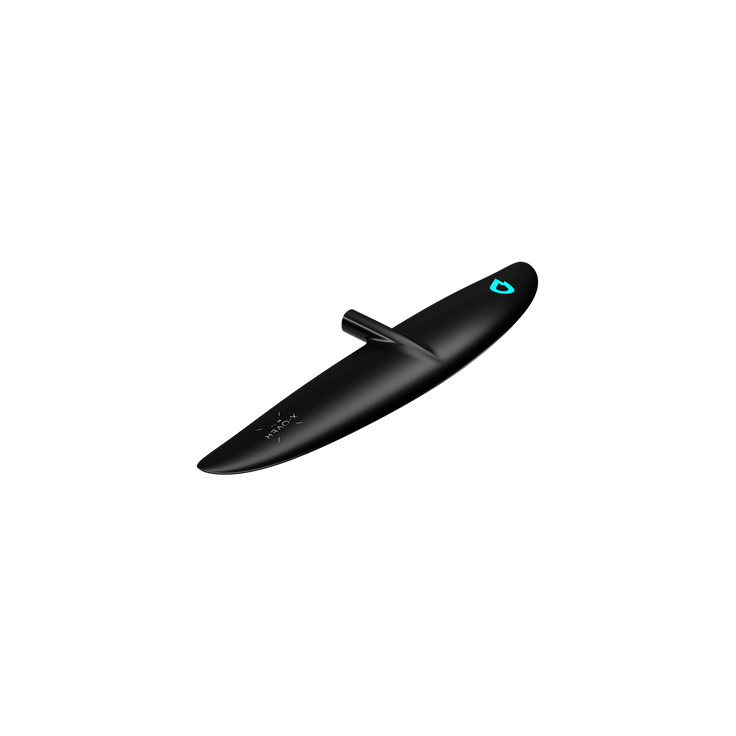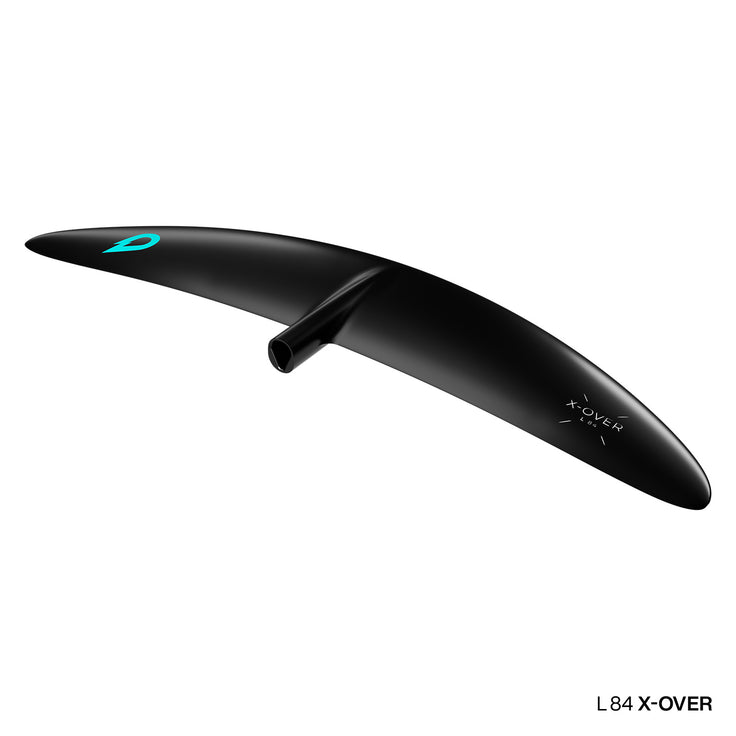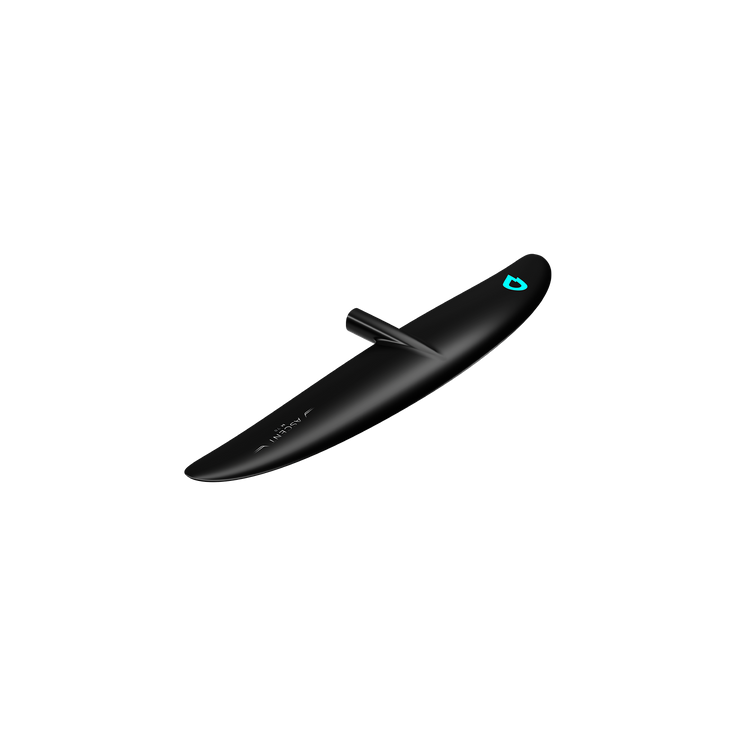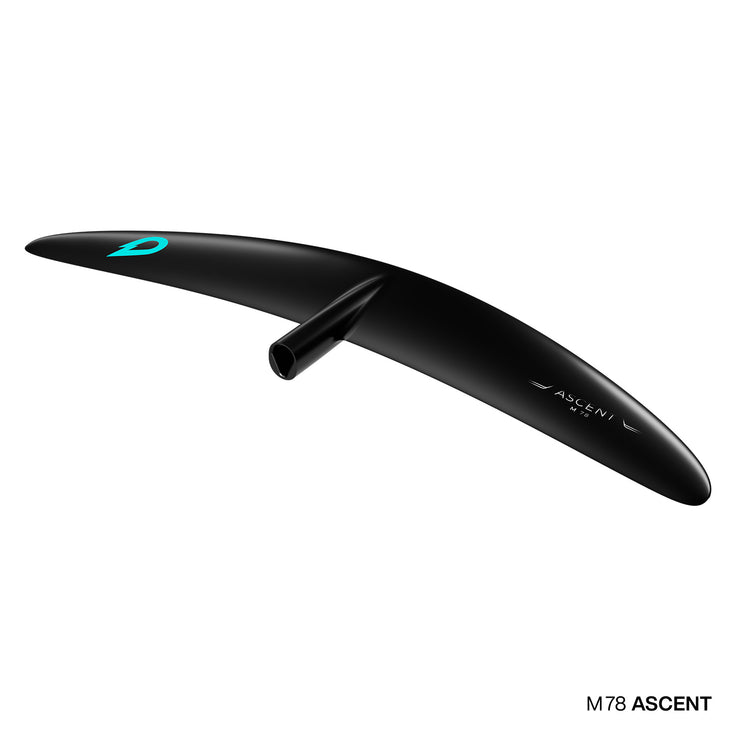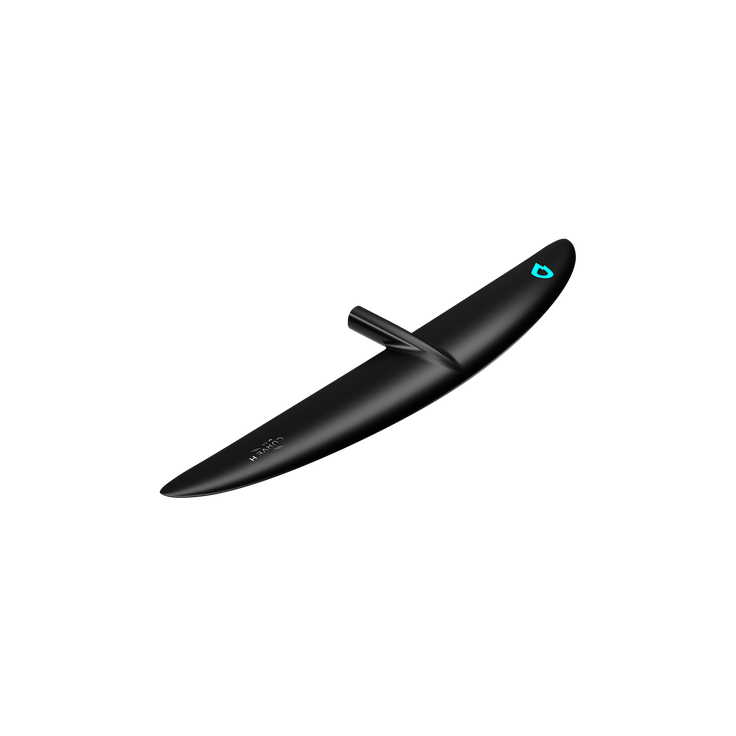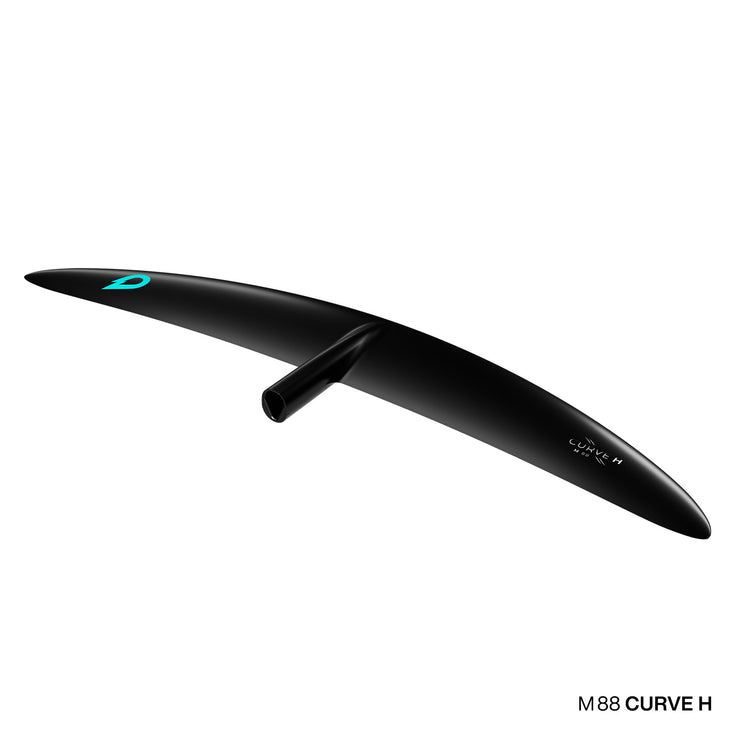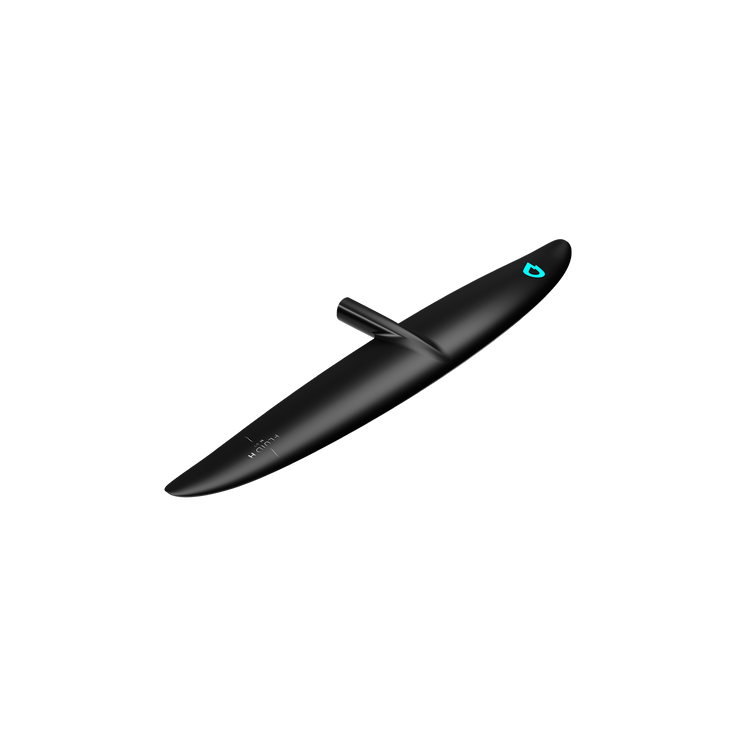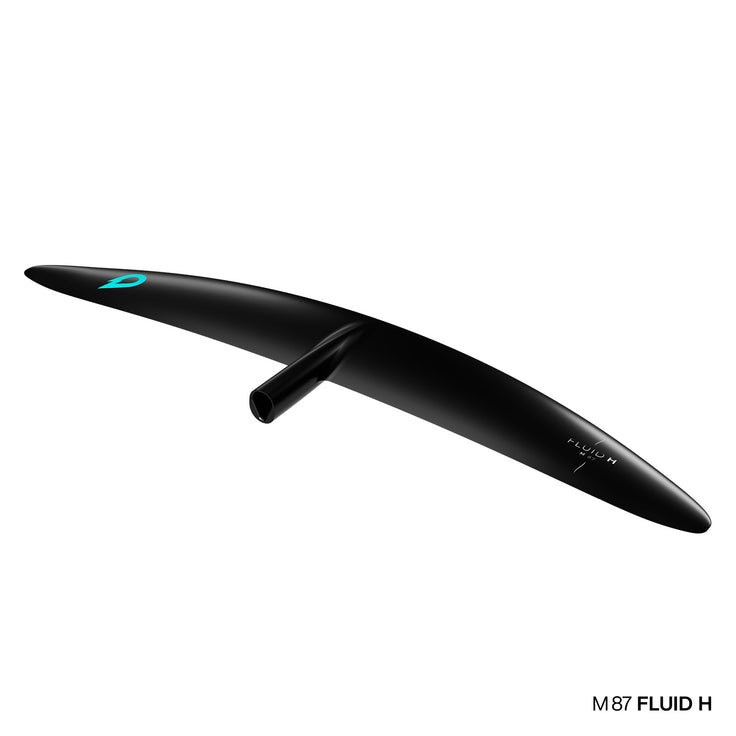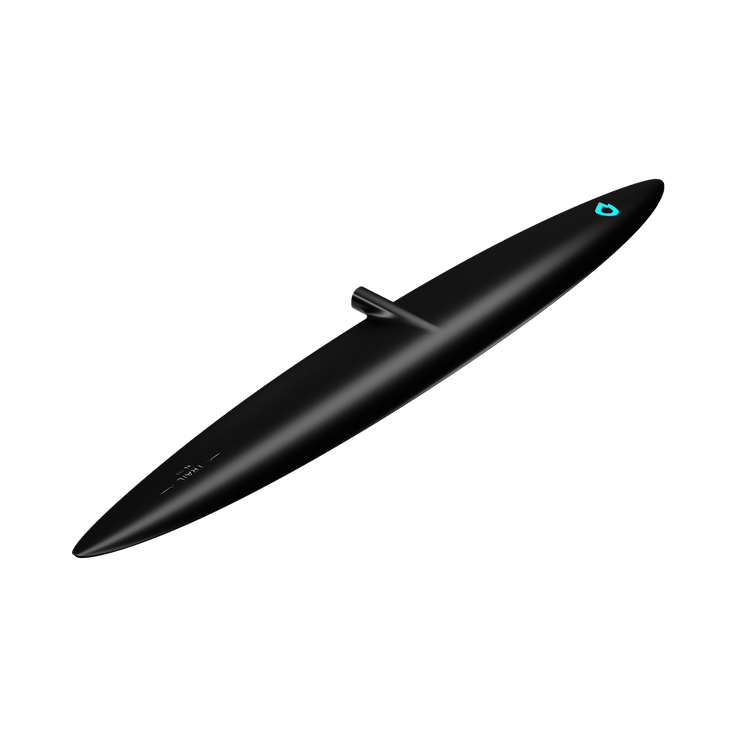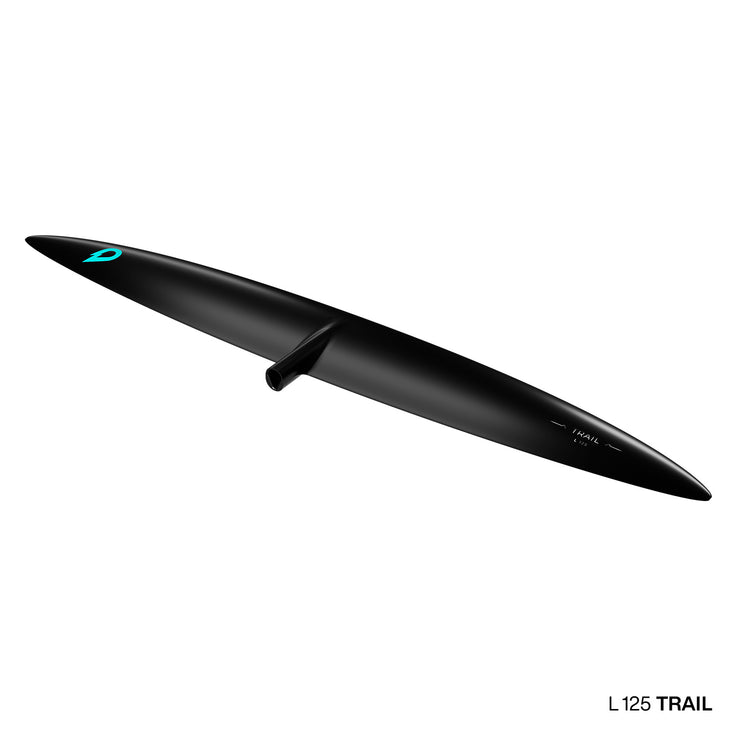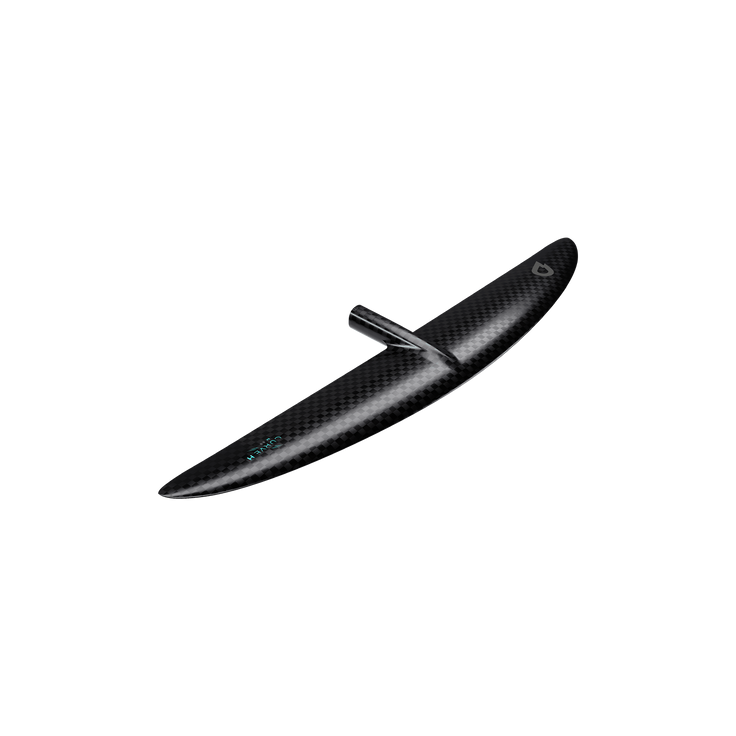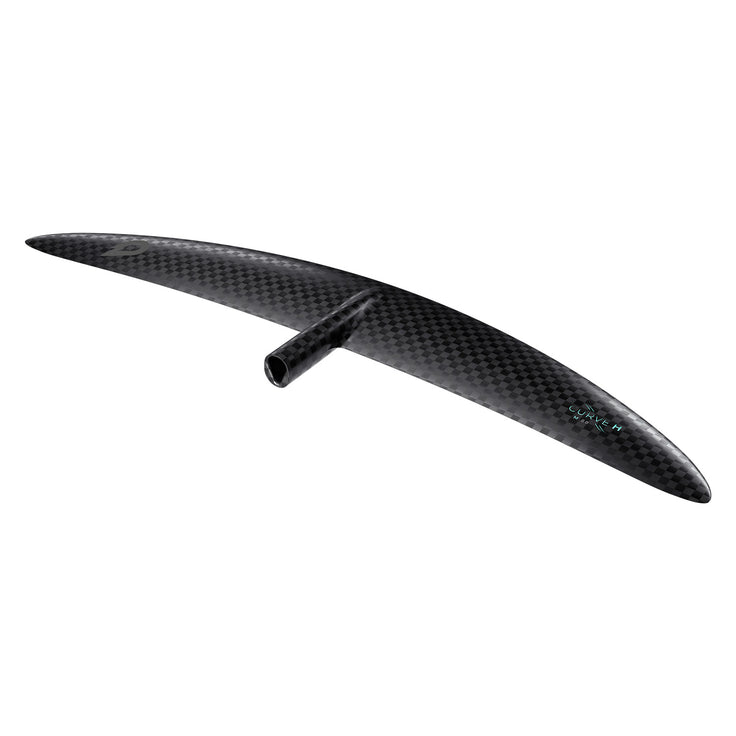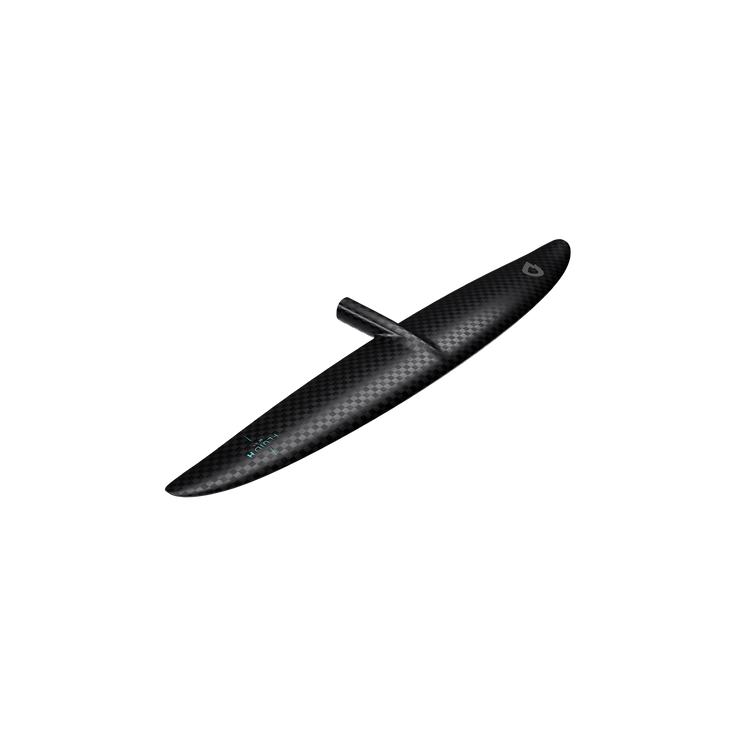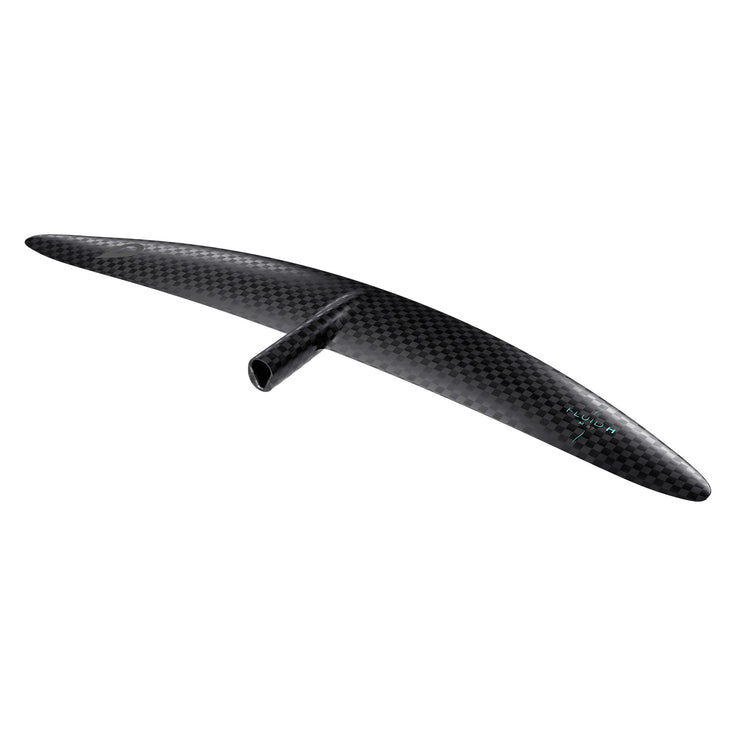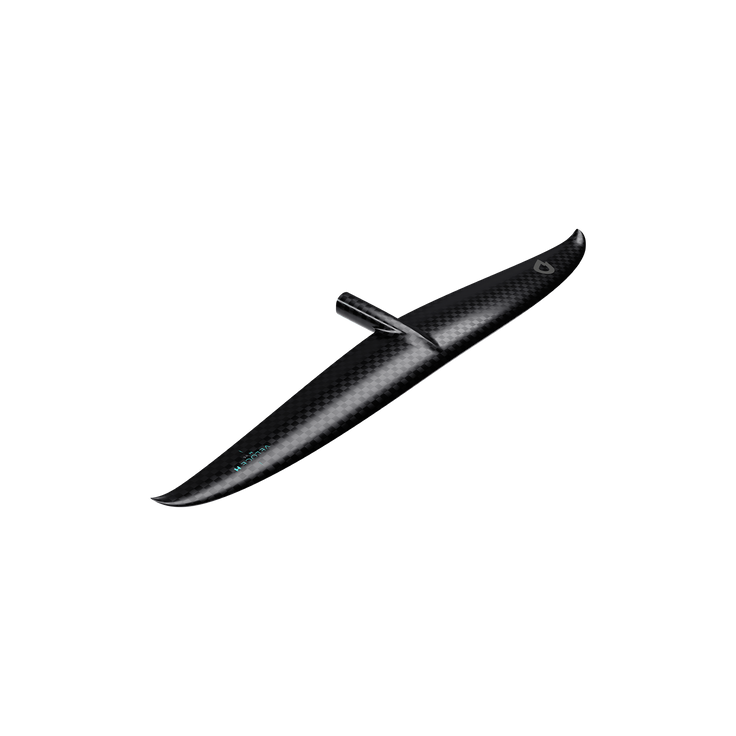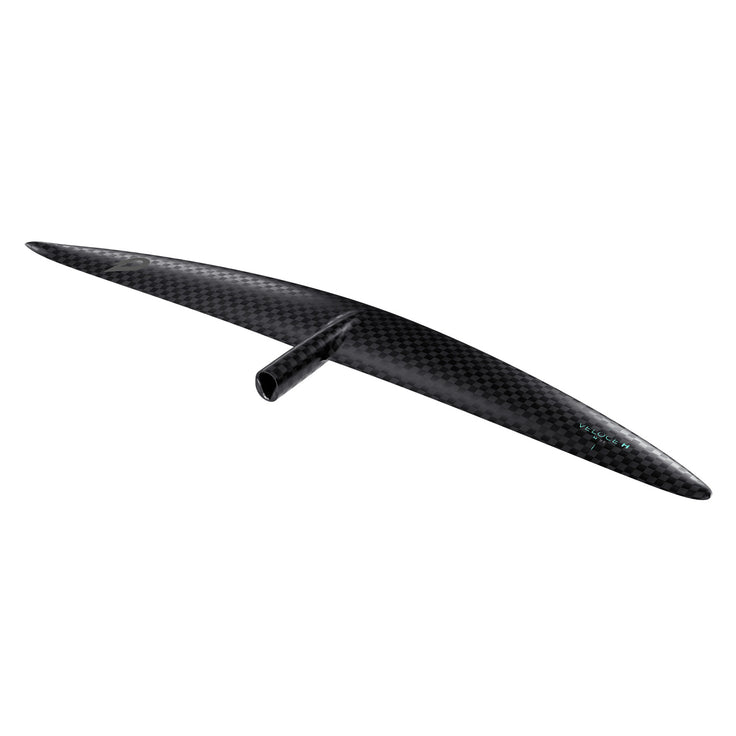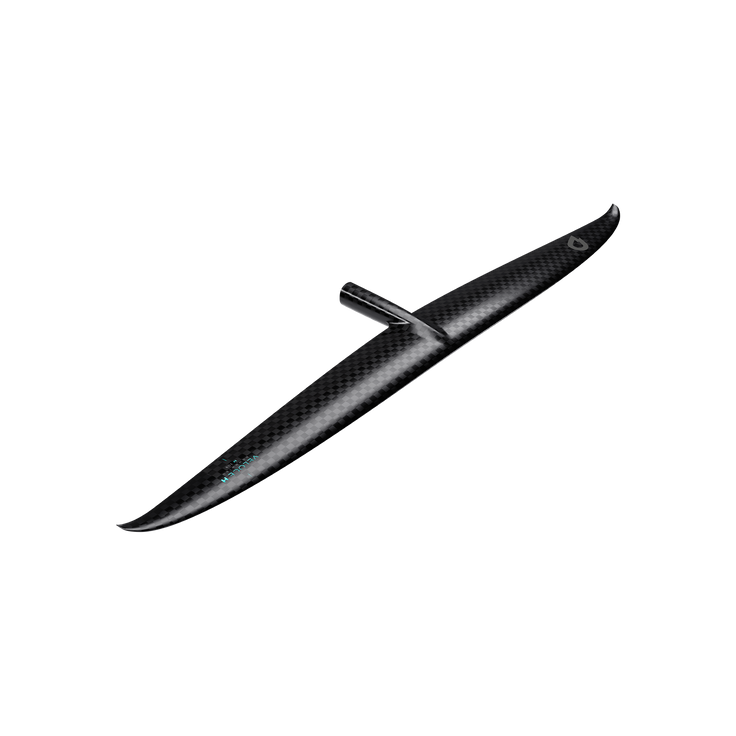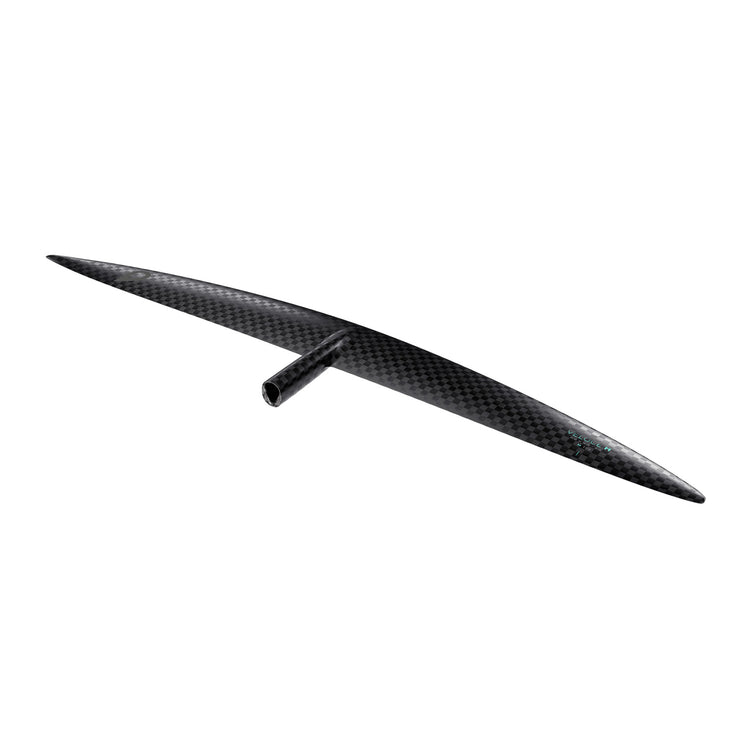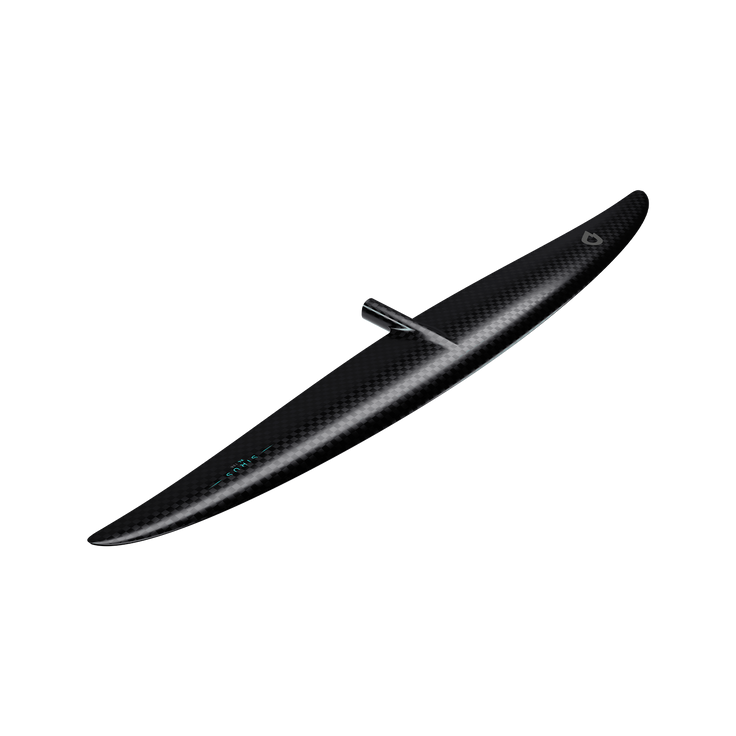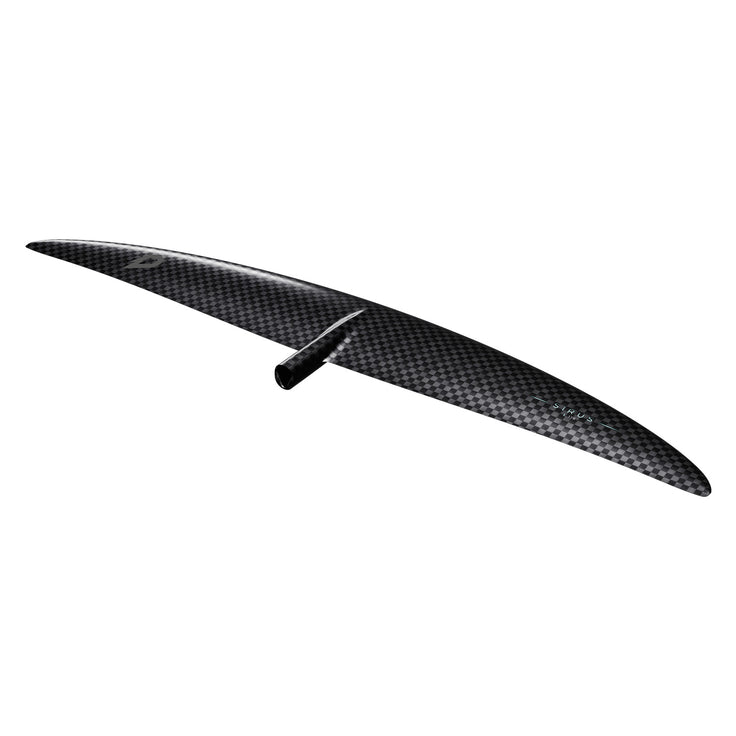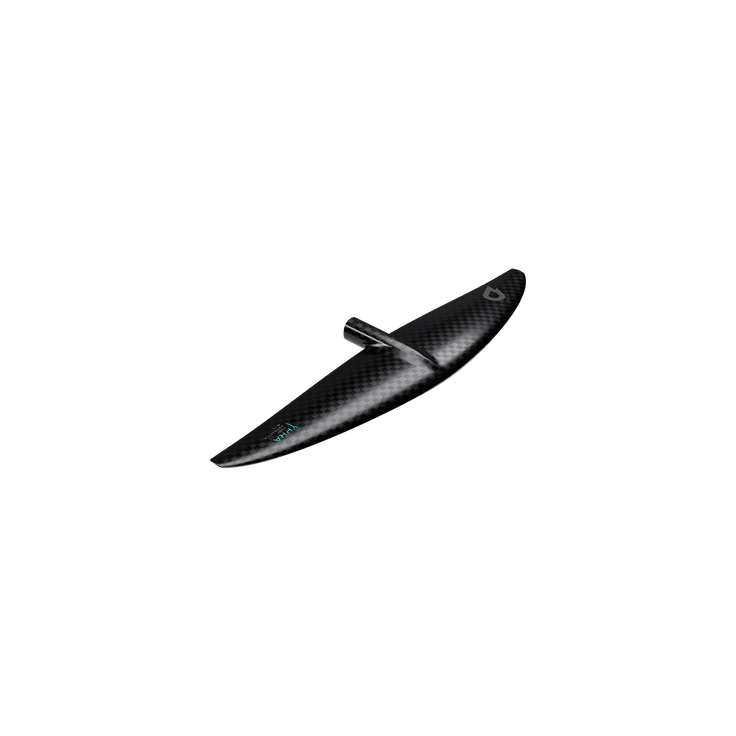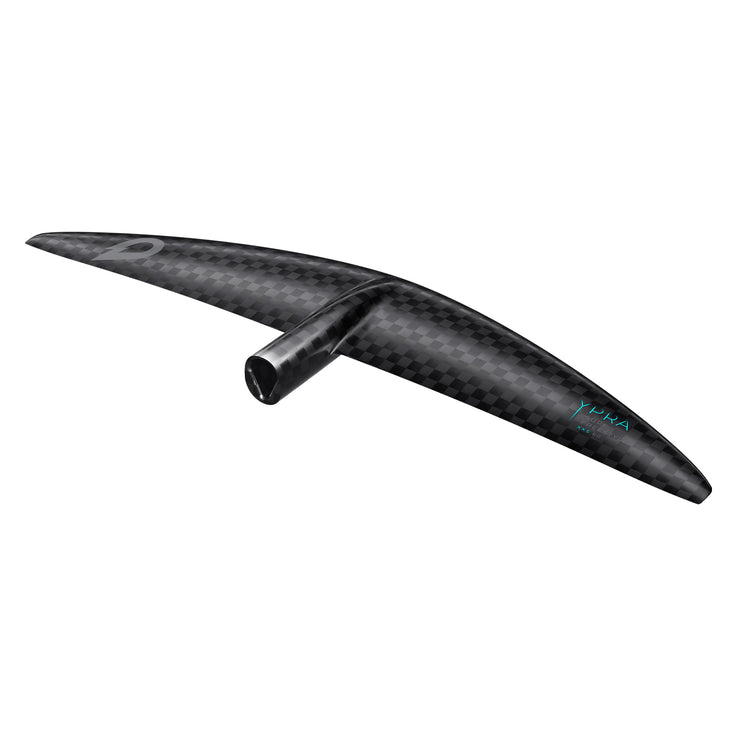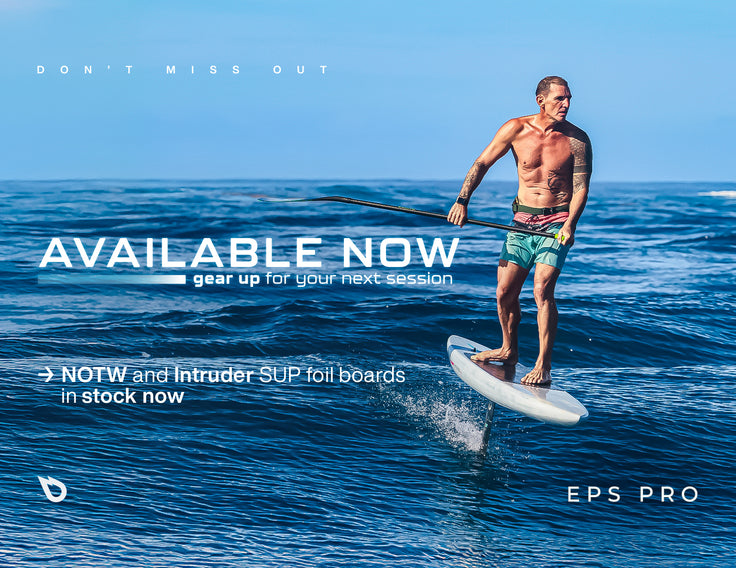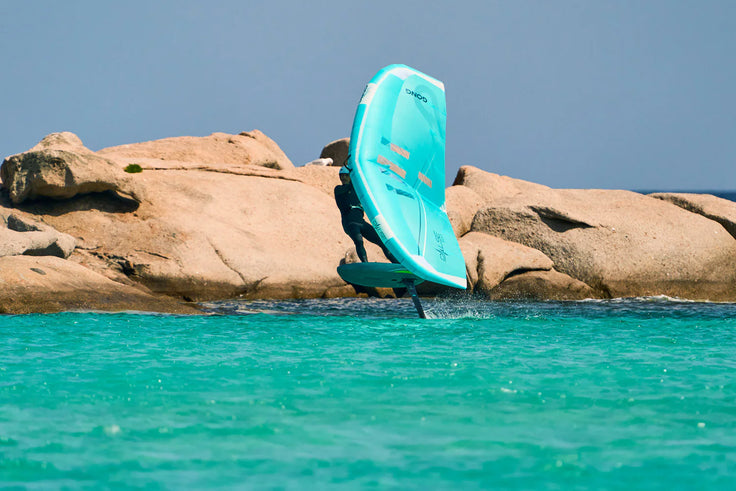GEAR: UNDERSTANDING THE SPECS OF A FRONT WING OR A STAB
Surface area, aspect ratio, anhedral... we break down all the specs of a foil for you.
When choosing a foil wing that fits your needs from the wide range of available options, you can either rely on expert recommendations or dive into the specifications of each model yourself! In order to go down this second path, which is obviously the most demanding path to follow, we have broken all the specs down here below for a better understanding of their respective impacts on the water! Note that if you are lost in all these technical elements, the first option is always open at GONG 😉 Do not hesitate to contact our technical advisers if necessary.
 Fluid H FG setup mounted on an Alu V3 mast.
Fluid H FG setup mounted on an Alu V3 mast.
Though the specifications of a foil are multifaceted, a large part of the market only goes by the surface of a wing. This data is at best an interesting indication within the same range of foils but is in no way sufficient to compare front wings of different ranges. The thickness of the profile, the volume of the wing, the chord or the wingspan, will have equally important impacts. So let’s see them all.
Before reviewing all those specs, a little reminder about the function of your front wing and your stab:
- Front wing: this is the centerpiece of your foil, its shape and size will set your range of use and program. The front wings define the base of your program with a wide choice of shapes, from the most forgiving for beginners to the most performant for pros.
- Stabilizer: the stab is the other key element of your foil. It allows, as its name suggests, to stabilize the flight and above all to make your job easier! Depending on its size and shape, it will change the overall behavior of your foil. The front wing defines the program and the stab will allow you to change the sensations. It can calm down certain front wings or, on the contrary, make them more playful, even aggressive. Its influence is often underestimated. So the best thing if you can, is to test stabs of your friends to find out how important they are.
After this reminder, let’s review the different specificities of the elements of your foil.
- Outline :
- “Rounded” outlines designed for ease (X-Over, Ascent) and/or maneuverability (Curve, Fluid). Overall, a rounded outline offers more progressiveness in changes of direction. The curves are less technical because you benefit from a more fluid and continuous grip.

- The “stretched out” outlines for performance with glide and speed (like that of a Veloce HDW). The performance gain comes at the expense of the forgiveness of a rounder outline. A type of outline that is aimed at more experienced foilers who will quickly learn to extract the full potential in curves, often exceeding what they were able to achieve on foils with a rounded outline.

It should be noted that the distribution of the profile will strongly influence the behavior of the wing. For example:
- a very round leading edge will facilitate the entry into curves.
- moving the tips back from the center of the wing will self stabilize the foil.
- centering the surface will improve rail to rail.
- more surface at the tips will stabilize the foil and limit its maneuverability.
- scalloping the trailing edge will reduce the chord and boost glide.
Obviously these elements are to be associated with all the other parameters because we can choose elements that contradict each other to create a balance or, conversely, combine complementary elements to give a clear meaning. The design of the outline is crucial.
2. Wingspan :
The wingspan is the total distance from tip to tip of the wing. It has an important role in roll stability and handling. With a small wingspan, the foil enters curves more easily and needs less pressure to engage in a turn (like the Ypra Surf-Freestyle). On the contrary, a wing with more wingspan will have a larger curve radius. All things being equal, more wingspan means more glide and less maneuverability, but also more forgiveness in high range, and less in low range.
3. Chord :
The chord of a front wing represents the central maximum width that goes from the leading edge to the trailing edge. It defines its lift and its accessibility. A large chord will create low speed downforce, forgiveness, and lift but will limit glide by generating more drag. Beginner type wings like the Rise and X-Over have significant chords. They facilitate take-off and help to maintain flight even at low speed.
Conversely, low chord wings like the Ypra develop limited power at low speed making the take off more technical. But they allow much higher speeds while remaining very comfortable (limited pressure under the front foot). We have more glide in flight, which allows us to maintain flight with less energy. Overall, low chords are very technical.
4 – Aspect Ratio :
The aspect ratio could be summed up as the ratio between the wingspan and the chord of your wings. It is calculated by measuring the wingspan in centimeters and then dividing the square of that measurement by the area of the wing in square centimeters. This is how you define the aspect ratio of the wing.
Visually, recognizing a high or low aspect ratio wing is simple. Low aspect ratios are compact and have a collected shape while a high aspect ratio will be very slender.
To sum up, a front wing with a low aspect ratio is easy to start with and will be more reactive for surfing. Its advantage is low-end power with excellent lift and responsiveness. These are wings that allow you to have fun and progress easily!

The high aspect ratio wings are made to optimize glide. The take-off will be more technical and the need for speed to hold on to the flight will be greater. You might need aggressive pumping at some points. On the other hand, they bring a huge gain in glide and speed with an unparalleled planing ability. Sailing upwind is crazy in kite or wing foiling with such a front wing. You can go for angles amazingly close to the wind!

5 – Thickness :
When we talk about thickness, we refer to the maximum thickness of the profile. The thicker this profile, the more powerful it will be. On the contrary, a thin profile will be more progressive and allow better glide without saturating at high speed. Please note, we are talking about raw thickness, but also thickness of the chord to compare wings.
From one front wing size to the other within the same range, this thickness changes but remains proportional to the chord. A small size, intended for a small build or for strong wind / powerful waves, will be thinner than the large sizes intended for strong builds or small conditions.
For an identical chord:- The thick profiles facilitate take-off and low speed flights. On the other hand, this thickness creates more resistance (drag) in the water, which results in a slower top speed. But it will help you gain confidence and experience in flying. In strong winds or on powerful waves, these are wings that will become more physical with an ON/OFF behavior. We mainly find this type of profile on beginner / intermediate type foils, but also on reduced speed wings such as dock start / pumping wings or pure surf foiling wings which will evolve 5 to 10 knots slower than kite or wing foiling ones.
- Thin profiles will certainly need more speed to take off but, once in the air, their thinness gives them a better glide. They fly with more speed and much less drag. This gain allows you to plane further without slowing down. These are wings made primarily for going fast. At low speed, they will tend to lose stability and stall abruptly.
6 – Profile:
The profile is very important both in terms of glide and lift. The thickness, seen previously, will play an important role here depending on where this maximum thickness will be present.
For example, a front wing like the Rise has this thickness very close to the leading edge for maximum lift at low speeds.


Another important element, the curve of the intrado (underside of the front wing)! A profile with a very flat intrado will have lower lift but better top speed because it will limit drag. On the contrary, a profile with more hollow in this place will give more lift and stability at low speeds. And a very convex intrado will surely help the glide if it is well thought out.
A supercritical profile is a profile which on its trailing part tends to put the flows back in the axis of displacement. To do this, the rear third/quarter of the extrado and/or intrado profiles are slightly hollowed out so that, at the profile’s exit, the intra and extra flows come together with the least possible disturbance. So we recalibrate their speed at this stage while at the start of the profile we create a speed differential to generate lift. This type of profile is featured on the Veloce HDW above.
7 – Camber :
The camber is the shape of your wing seen from the front or back. This parameter influences the stability and glide of your foil.
The impact of the type of camber, all other data being equal, could be summed up as the influence of the hulls under the tail of a surfboard:
- Flat: neutral shape with a lot of glide but also lateral drift if you don’t hold it back.
- Negative camber (downward tips): uncommon shape in aviation because the tips would easily touch the ground, which is not so much an issue in the water. The effect is comparable to that of a concave under a board: we are locked on the water, great control, but limited rail to rail.
- Positive camber (upward tips): shape that looks like a V on a hull, so with a nice and smooth rail to rail, but less stability and control.
Thus a pronounced negative camber like on a X-Over gives you excellent grip and limits the yaw effect (stability of the foil in a straight line).

When the camber is moderate like on a Curve H, it keeps a minimum of stability while limiting drag for better glide and better top speed.

Another big advantage is that those front wings have very little risk of touching bottom when surfing in shallow water. Moreover, when very close to the surface, they can breach the tips without risk of ventilation. Above all, they are very versatile front wings.
8 – Surface area :
Although this spec cannot be relied upon alone to choose one model over another, the surface area of wings is the most frequently indicated comparative measurement on the market. It represents the projected surface area of your wing in cm².
10 – Front to rear span :
The front to rear span is the distance between the front wing and the stab. This spacing affects the overall comfort and stability of your foil.
- A long front to rear span will provide greater stability and lift. The foil feels more locked and less reactive to small parasitic movements. The longer front to rear span also increases stability, avoiding pitching, which allows for a smoother takeoff. This type of foil is great for facilitating learning (as with the X-Over) and for freerace / slalom navigation to keep the foil locked at full speed.
- On the other hand, with a reduced front to rear span, the reactivity of the foil is greater. You have a very low inertia during maneuvers, which gives maximum nervousness in curves. With this type of foil, you have a more playful flight, even downright aggressive with reduced curve radii. Be careful not to lose too much lift, which the designers compensate with more angle in the stab or profiles with more lift.
Our foils are designed with a front to rear span calculated according to their program. The difference will be made with the length of the sockets at the level of the stabs. The X-Over having the longest and the Ypra Surf-Freestyle the shortest. Then, depending on the practice and the feeling you are looking for, you can vary the front to rear span, with different stabilizer options. You can also fine-tune the center of thrust and stability with the various extensions (V3 front wing extension or V3 stabilizer extension) in our range.+

Buying guide: For information, at the bottom of each product page, you have a “Buying Guide” section where everything is explained: For whom? For what ? What size ? etc. In case of doubt, you can contact us on the online chat, make a telephone appointment via the chat or our contact form in the section “GONG”.


